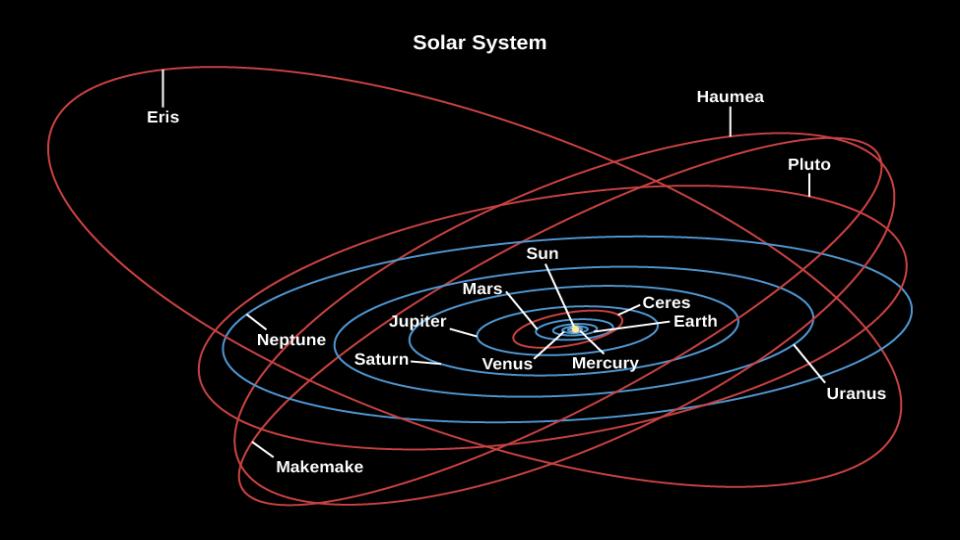An international team of astronomers has confirmed the discovery of a new dwarf planet orbiting in the frigid, dark expanse of our solar system far beyond Pluto. The icy world, provisionally named Caelus, travels on a vast and highly unusual orbit, earning it the nickname “Pluto’s extreme cousin” and offering new clues about the chaotic history of our cosmic neighborhood.
The finding, officially detailed in the latest issue of the journal Nature Astronomy, confirms that Caelus meets the criteria for dwarf planet status, making it the latest member of a select group of celestial bodies in the Kuiper Belt and beyond. The discovery was made using data from the Atacama Large Millimeter/submillimeter Array (ALMA) in Chile and the Subaru Telescope in Hawaii.
Key Details of the Discovery
| Key Fact | Detail / Statistic |
| Object Name | Caelus (provisional designation 2025 AL7) |
| Classification | Dwarf Planet / Extreme Trans-Neptunian Object |
| Estimated Diameter | Approximately 580 kilometers (360 miles) |
| Orbital Period | Estimated at over 12,000 Earth years |
| Closest/Farthest Point | 48 AU / ~850 AU from the Sun (1 AU = Earth-Sun distance) |
A New Member of the Solar System’s Family
The confirmation of Caelus as a new dwarf planet is the culmination of years of patient observation and analysis. The object was first detected as a faint, slow-moving point of light in images captured by the Subaru Telescope, a powerful instrument operated by the National Astronomical Observatory of Japan.

“Detecting objects this faint and this distant is a monumental technological challenge,” said Dr. Hina Sato, a lead author of the study and an astronomer at the Institute for Astronomy at the University of Hawaii. “We are pushing the limits of what is possible to map the true extent of our Solar System.”
To confirm its nature, the team used the ALMA observatory, which can detect the faint heat emitted from cold, distant objects. These observations allowed them to estimate the object’s size and distinguish it from a smaller, non-spherical body. An object must be massive enough for its own gravity to pull it into a nearly round shape to be classified as a dwarf planet, a definition established by the International Astronomical Union (IAU).
The Science Behind “Pluto’s Extreme Cousin”
The moniker “Pluto’s extreme cousin” stems from Caelus’s extraordinary orbit, which places it in a category of bodies known as extreme trans-Neptunian objects (ETNOs). While Pluto’s orbit is somewhat eccentric, taking it from 30 to 49 times Earth’s distance from the Sun (AU), Caelus’s path is far more stretched.

At its closest approach to the Sun (perihelion), Caelus comes no nearer than about 48 AU. However, at its most distant point (aphelion), it travels out to an estimated 850 AU, deep into a mysterious region of space known as the Oort Cloud.
“This object is not behaving like its neighbors in the Kuiper Belt,” explained Dr. Scott Sheppard of the Carnegie Institution for Science, an expert on small bodies in the outer Solar System who was not involved in the study. “Its orbit is difficult to explain without invoking the gravitational influence of a much larger, unseen object in the far outer Solar System.”
This discovery is expected to intensify the search for “Planet Nine,” a hypothetical, Neptune-sized planet that some astronomers believe orbits in the distant darkness, gravitationally sculpting the paths of ETNOs like Caelus and Sedna.
What This Discovery Means for Science
The existence of Caelus provides a critical new data point for models of the Solar System’s formation and evolution. The extreme orbits of ETNOs are thought to be relics of a more chaotic past, when the giant planets (Jupiter, Saturn, Uranus, and Neptune) migrated from their original positions, flinging smaller worlds into distant, stable orbits.
By studying Caelus’s size, composition, and trajectory, scientists hope to test these theories. Future observations with the James Webb Space Telescope (JWST) are already being planned to analyze the sunlight reflecting off Caelus’s surface, which could reveal the presence of specific ices like methane and nitrogen, similar to those found on Pluto and Triton.
The object’s formal name, Caelus, the Roman god of the sky, will be submitted to the IAU for approval. For now, astronomers are celebrating the confirmation of a new, albeit distant, neighbor in our vast Solar System. The finding underscores how much remains to be explored, even within our own celestial family.
Read More
A Celestial Dance: Astronauts Share Unprecedented Views of Aurora from Space
